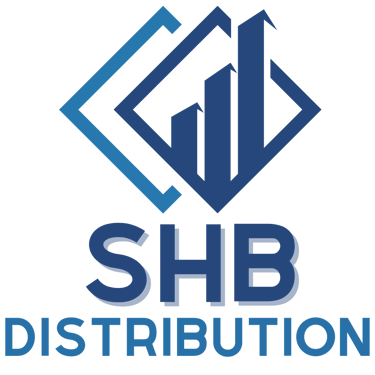Key Metrics Every Amazon Seller Should Track to Succeed
Tracking key metrics is essential for the long-term success of any Amazon business. By keeping a close eye on metrics like sales, conversion rates, CTR, ACoS, reviews, inventory turnover, and profit margins, sellers can gain valuable insights into their store’s performance.


Key Metrics Every Amazon Seller Should Track to Succeed
Running a successful Amazon business requires more than just listing products and waiting for sales to roll in. To ensure sustainable growth, sellers must track key performance indicators (KPIs) that give insight into their store’s health and performance. By monitoring these metrics, sellers can make informed decisions, optimize their operations, and ultimately increase revenue.
In this blog post, we’ll cover the key metrics every Amazon seller should track to ensure the ongoing success of their business.
1. Sales and Revenue
At the heart of any Amazon business is sales and revenue. These metrics give a clear picture of how well your products are performing and how much money you’re bringing in. Tracking these figures daily, weekly, and monthly can help you identify trends, seasonal fluctuations, and areas for improvement.
Total Sales: The total number of units sold over a specific period.
Revenue: The total dollar amount generated from sales before deducting expenses like Amazon fees, shipping costs, or advertising spend.
Monitoring your sales and revenue will give you a baseline for measuring other KPIs, such as conversion rates, ad performance, and profit margins.
2. Conversion Rate
Your conversion rate (CR) measures the percentage of customers who make a purchase after viewing your product. A low conversion rate means that while customers are visiting your listings, they aren’t convinced to buy, which could indicate issues with product descriptions, pricing, or reviews.
To calculate conversion rate:
Conversion Rate (%) = (Number of Sales ÷ Total Page Views) × 100
Amazon’s algorithm favors listings with higher conversion rates, so improving this metric can also lead to better organic search rankings. To increase conversion rates, focus on optimizing your product listings with better images, compelling descriptions, and competitive pricing.
3. Click-Through Rate (CTR)
The click-through rate (CTR) reflects the percentage of people who see your product in search results and click on it. A high CTR suggests that your product title, price, and main image are enticing enough to get users to click through to your listing.
To calculate CTR:
CTR (%) = (Clicks ÷ Impressions) × 100
If your CTR is low, it may be a sign that your product titles or images need improvement, or that your pricing is not competitive. Make sure to conduct regular keyword research and A/B test different title variations to find what resonates best with your audience.
4. Advertising Cost of Sales (ACoS)
Amazon’s pay-per-click (PPC) advertising is a great way to drive traffic to your listings, but it’s important to ensure that your advertising spend is generating a positive return on investment. Advertising Cost of Sales (ACoS) measures the percentage of revenue that you spend on advertising.
To calculate ACoS:
ACoS (%) = (Ad Spend ÷ Revenue Generated from Ads) × 100
A lower ACoS indicates that your ads are driving sales efficiently. If your ACoS is too high, it could mean that you need to refine your ad targeting or bid strategy. Optimizing your PPC campaigns is critical for balancing ad spend and maximizing profitability.
5. Customer Reviews and Ratings
Customer reviews and ratings are essential to the success of your products on Amazon. Positive reviews not only boost your product’s credibility but also improve your organic rankings in Amazon’s search algorithm. Tracking the number and quality of reviews you receive is key to maintaining a good seller reputation.
To ensure healthy reviews:
Encourage satisfied customers to leave positive feedback.
Address negative reviews promptly and professionally to show you care about customer satisfaction.
Higher ratings and positive reviews lead to better conversion rates and increased sales.
6. Inventory Turnover Rate
Inventory management is a crucial aspect of running a successful Amazon business. Your inventory turnover rate measures how quickly you sell through your stock. Keeping inventory levels optimized ensures that you don’t run out of stock, which can hurt your sales and rankings, or have too much stock, which can lead to higher storage fees.
To calculate Inventory Turnover Rate:
Inventory Turnover Rate = (Cost of Goods Sold ÷ Average Inventory)
Regularly monitoring your stock levels and turnover rate allows you to plan your inventory purchases more effectively, ensuring that you can meet customer demand without overstocking.
7. Profit Margin
Ultimately, your business’s success comes down to how much profit you make. Profit margin measures the percentage of revenue that is profit after deducting all costs, including Amazon fees, product costs, advertising expenses, and fulfillment fees.
To calculate Profit Margin:
Profit Margin (%) = ((Revenue - Total Costs) ÷ Revenue) × 100
Tracking profit margins allows you to identify areas where you may be overspending or where you can increase profitability. This might involve adjusting pricing, reducing ad spend, or finding more cost-effective fulfillment options.
Conclusion
Tracking key metrics is essential for the long-term success of any Amazon business. By keeping a close eye on metrics like sales, conversion rates, CTR, ACoS, reviews, inventory turnover, and profit margins, sellers can gain valuable insights into their store’s performance. Regularly analyzing these KPIs helps identify areas for improvement, optimize operations, and ultimately grow your Amazon business.
By understanding and acting on these critical metrics, Amazon sellers can set themselves up for sustained success in an increasingly competitive marketplace.


